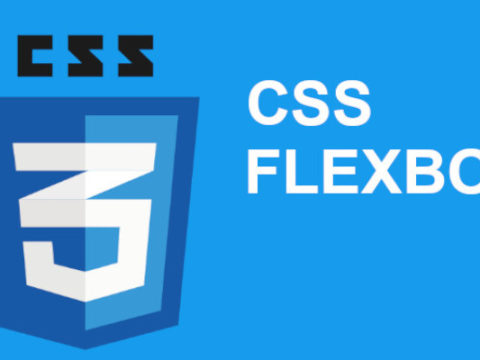
Q. What is Laravel?
Laravel is a free and open-source PHP framework that is used to develop complex web applications. It supports the Model-View-Controller (MVC) design pattern.
The Laravel framework is also the most popular PHP framework among web developers in the year 2020.
Q. What are the main features of Laravel?
Some of the main features of Laravel are:
- Eloquent ORM
- Query builder
- Reverse Routing
- Restful Controllers
- Migrations
- Database Seeding
- Unit Testing
- Homestead
Q. Define Composer.
Laravel is a popular web application framework that allows you to build dynamic websites and applications.
A composer is a tool that includes all the dependencies and libraries. It helps the user to develop a project concerning the mentioned framework. Third-party libraries can be installed easily using composer.
Composer is used to managing its dependencies, which are noted in the composer.json file and placed in the source folder.
Q What is an artisan?
Artisan is the command-line tool for Laravel to help the developer build the application. You can enter the below command to get all the available commands:
PHP artisan list: Artisan command can help in creating the files using the make command. Some of the useful make commands are listed below:
php artisan make:controller – Make Controller file
php artisan make:model – Make a Model file
php artisan make:migration – Make Migration file
php artisan make:seeder – Make Seeder file
php artisan make:factory – Make Factory file
php artisan make:policy – Make Policy file
php artisan make:command – Make a new artisan command
Q. Name aggregates methods of the query builder.
Aggregates methods of query builder are: 1) max(), 2) min(), 3) sum(), 4) avg(), and 5) count().
Q. How to define environment variables in Laravel?
The environment variables can be defined in the .env file in the project directory. A brand new laravel application comes with a .env.example and while installing we copy this file and rename it to .env and all the environment variables will be defined here.
Some examples of environment variables are APP_ENV, DB_HOST, DB_PORT, etc.
Q. What are available databases supported by Laravel?
Laravel has you covered. The database configuration file is app/config/database.php. You can define your database connections in this file and specify which you should use reference. Examples for all of the supported database systems are provided in this file.
Laravel supports four database systems: MySQL, Postgres, SQLite, and SQL Server.
Q. What is Query Builder in Laravel?
Laravel’s Query Builder provides more direct access to the database, an alternative to the Eloquent ORM. It doesn’t require SQL queries to be written directly. Instead, it offers a set of classes and methods which are capable of building queries programmatically. It also allows specific caching of the results of the executed queries.
Q. What are the popular features of Laravel?
There are several popular features in Laravel. These are enlisted below.
- Eloquent ORM
- Query Builder
- Reverse routing
- Class auto-loading
- Restful controllers
- Blade template engine
- Lazy collection
- Unit testing
- Database seeding
- Migrations
Q. What is a Route?
A route is basically an endpoint specified by a URI (Uniform Resource Identifier). It acts as a pointer in the Laravel application.
Most commonly, a route simply points to a method on a controller and also dictates which HTTP methods are able to hit that URI.
Q. Can we use Laravel for Full Stack Development (Frontend + Backend)?
Laravel is the best choice to make progressive, scalable full-stack web applications. Full-stack web applications can have a backend in laravel and the frontend can be made using blade files or SPAs using Vue.js as it is provided by default. But it can also be used to just provide rest APIs to a SPA application.
Hence, Laravel can be used to make full-stack applications or just the backend APIs only.
Q. How to put Laravel applications in maintenance mode?
Laravel makes it easy to manage your deployment with minimal effort. Laravel allows you to quickly and easily disable your application while updating or performing maintenance when you need to make changes to your server or database.
To enable maintenance mode, the following are some helpful laravel commands related to maintenance mode:
# enable maintenance mode
php artisan down
# disable maintenance mode
php artisan up
# if you want the client to refresh
# page after a specified number of seconds
php artisan down –retry=60
Q. What do you understand by Reverse routing?
Reverse routing in Laravel is used to generate the URL based on name or symbol. It defines a relationship between the links and, Laravel routes, and it is possible to make later changes to the routes to be automatically propagated into relevant links. When the links are generated using names of existing routes, the appropriate uniform resource identifiers (URIs) are automatically generated by Laravel. Reverse routing provides flexibility to the application and helps the developer to write cleaner codes.
- Route::get(‘login’, ‘users@login’);
A link can be created to it using reverse routing, which can be further transferred in any parameter that we have defined. If optional parameters are not supplied, they are removed automatically from the generated links.
- {{ HTML::link_to_action(‘users@login’) }}
By using it, a URL like https://abc.go.com/loginwill be created automatically.
Q. What are the advantages of using the Laravel framework to build complex web applications?
There are many advantages of using the Laravel framework and some of them are listed below:
- Laravel is free to use.
- The configuration of the application is simple and straightforward.
- The framework supports the Model-View-Controller (MVC) architecture.
- Inbuilt modules and libraries of Laravel help to speed up the development process.
- The performance of Laravel applications is high.
- Routing is easy.
- It has a feature called Eloquent ORM that is used to handle database operations.
- It has a templating engine called Blade.
- Laravel has an inbuilt facility to support unit tests.
- Community support is high.
Q. Explain important directories used in a common Laravel application.
Directories used in a common Laravel application are:
- App/: This is a source folder where our application code lives. All controllers, policies, and models are inside this folder.
- Config/: Holds the app’s configuration files. These are usually not modified directly but instead, rely on the values set up in the .env (environment) file at the root of the app.
- Database/: Houses the database files, including migrations, seeds, and test factories.
- Public/: Publicly accessible folder holding compiled assets and of course an index.php file.
Q What are seeders in Laravel?
Seeders in Laravel are used to put data in the database tables automatically. After running migrations to create the tables, we can run `php artisan db:seed` to run the seeder to populate the database tables.
We can create a new Seeder using the below artisan command:
php artisan make:seeder [className]
It will create a new Seeder like the below:
<?php
use App\Models\Auth\User;
use Illuminate\Database\Eloquent\Model;
use Illuminate\Database\Seeder;
class UserTableSeeder extends Seeder
{
/**
* Run the database seeds.
*/
public function run()
{
factory(User::class, 10)->create();
}
}The run() method in the above code snippet will create 10 new users using the User factory.
Factories will be explained in the next question.
Q What are the factories in Laravel?
Laravel has an excellent model factory feature that allows you to build fake data for your models. It is beneficial for testing and seeding counterfeit data into your database to see your code in action before any accurate user data comes in.
By default, Laravel’s database seeding feature will create a new row in the database table and insert the value into each field. But sometimes, you might want a few extra areas or some sort of random string instead of a numeric value. That’s where model factories come in handy!
Model Factories allow you to create a new model instance using their rules. You can do anything from creating an empty model instance to creatinbuildingth all fields filled out with values or even random ones!
Q Does Laravel support caching?
Yes, Laravel provides support for popular caching backends like Memcached and Redis.
By default, Laravel is configured to use file cache driver, which is used to store the serialized or cached objects in the file system. For huge projects, it is suggested to use Memcached or Redis.
Q Name a few competitors of Laravel?
The following list shows the top competitors. They are all among the top 10 PHP frameworks in 2020.
- Codeigniter
- Symfony
- Yii
- CakePHP
- Zend Framework
- Phalcon
- FuelPHP
Q. Explain traits in Laravel.
Laravel traits are a group of functions that you include within another class. A trait is like an abstract class. You cannot instantiate directly, but its methods can be used in concrete class.
Q. What are Models?
With Laravel, each database table can have a model representation using a model file which can be used to interact with that table using Laravel Eloquent ORM.
We can create a model using this artisan command:
php artisan make:model Post
This will create a file in the models’ directory and will look like below:
class Post extends Model
{
/**
* The attributes that are mass assignable.
*
* @var array
*/
protected $fillable = [];
/**
* The attributes that should be hidden for arrays.
*
* @var array
*/
protected $hidden = [];
}A Model can have properties like table, fillable, hidden, etc which defines properties of the table and model.
Q. How to enable query log in laravel?
Our first step should be
DB::connection()->enableQueryLog();
After our query, you should place it
$querieslog = DB::getQueryLog();
After that, you should place it
dd($querieslog)
Q. How will you explain middleware in Laravel?
As the name suggests, middleware works as a middleman between request and response. Middleware is a form of HTTP requests filtering mechanism. For example, Laravel consists of middleware which verifies whether the user of the application is authenticated or not. If a user is authenticated and trying to access the dashboard then, the middleware will redirect that user to home page; otherwise, a user will be redirected to the login page.
There are two types of middleware available in Laravel:
Global Middleware
It will run on every HTTP request of the application.
Route Middleware
It will be assigned to a specific route.
Syntax
php artisan make:middlewareMiddelwareName Example
php artisan make:middlewareUserMiddleware Q. What are the differences between Laravel and CodeIgniter frameworks?
There are several differences between Laravel and CodeIgniter frameworks, and some main differences are shown in the below table.
| Laravel Framework | CodeIgniter Framework |
|---|---|
| Relational object-oriented | Object-oriented |
| Supports custom HTTPS routes | Does not support HTTPS routes fully |
| Has authentication class features | No built-in authentication features |
| Has an inbuilt unit testing feature | No inbuilt unit testing feature |
| Use blade templates | Does not use blade templates |
| Not easy to learn for beginners | Easy to learn for beginners |
| Easy to develop REST APIs | Not easy to develop REST APIs |
| Supports ORM | Does not support ORM |
Q. How will you register service providers?
You can register service providers in the config/app.php configuration file that contains an array where you can mention the service provider class name.
Q. What are Relationships in Laravel?
Relationships in Laravel are a way to define relations between different models in the applications. It is the same as relations in relational databases.
Different relationships available in Laravel are:
- One to One
- One to Many
- Many to Many
- Has One Through
- Has Many Through
- One to One (Polymorphic)
- One to Many (Polymorphic)
- Many to Many (Polymorphic)
Relationships are defined as a method on the model class. An example of One to One relation is shown below.
<?php
namespace App\Models;
use Illuminate\Database\Eloquent\Model;
class User extends Model
{
/**
* Get the phone associated with the user.
*/
public function phone()
{
return $this->hasOne(Phone::class);
}
}The above method phone on the User model can be called like : `$user->phone` or `$user->phone()->where(…)->get()`.
We can also define One to Many relationships like below:
<?php
namespace App\Models;
use Illuminate\Database\Eloquent\Model;
class User extends Model
{
/**
* Get the addresses for the User.
*/
public function addresses()
{
return $this->hasMany(Address::class);
}
}Since a user can have multiple addresses, we can define a One to Many relations between the User and Address model. Now if we call `$user->addresses`, eloquent will make the join between tables and it will return the result.
Q. What is Auth? How is it used?
Laravel Auth is an in-built functionality provided by Laravel to identify the user credentials with the database. It takes input parameters like username and password for user identification. If the settings match, then the user is said to be authenticated.
If you want to authenticate your laravel application, then you can use the auth function.
Q. What do you understand by Unit testing?
Unit testing is built-in testing provided as an integral part of Laravel. It consists of unit tests which detect and prevent regressions in the framework. Unit tests can be run through the available artisan command-line utility.
Q What are the server requirements for Installing Laravel version 9?
Installing Laravel Homestead will fulfill server requirements for installing Laravel 8.
If you are not using Laravel Homestead, your server should meet the following requirements:
- PHP version 7.3 or above version
- PHP extensions
- BCMath PHP Extension
- Ctype PHP Extension
- Fileinfo PHP extension
- JSON PHP Extension
- Mbstring PHP Extension
- OpenSSL PHP Extension
- PDO PHP Extension
- Tokenizer PHP Extension
- XML PHP Extension
Q. Where will you define Laravel’s Facades?
All facades of Laravel have been defined in Illuminate\Support\Facades namespace.
Q. How to create a route for resources in laravel?
For creating a resource route we can use the below command:
Route::resource('blogs', BlogController::class);This will create routes for six actions index, create, store, show, edit, update and delete.
Q. How to use skip() and take() in Laravel Query?
If you’re looking for a way to limit the number of results in your query, skip() and take() are two great options!
skip() is used to skip over several results before continuing with the query. Take() is used to specify how many results you want from the query.
For example, if you want to get only five results from a query that usually returns 10, you’d use skip(5). If you’re going to start at the 6th result in the question and get everything after it (skipping 1), then you’d use take(1).




